THE THEATRE ORGAN
PART TWO:
BUILDERS OF THE THEATRE ORGANS
THIS PAGE IS WRITTEN IN CONJUNCTION WITH
GLEN TWAMLEY (FRIENDS OF BEER WURLITZER)
-oOo-
PAGE ONE:
THE WURLITZER ORGAN
-oOo-
INTRODUCTION
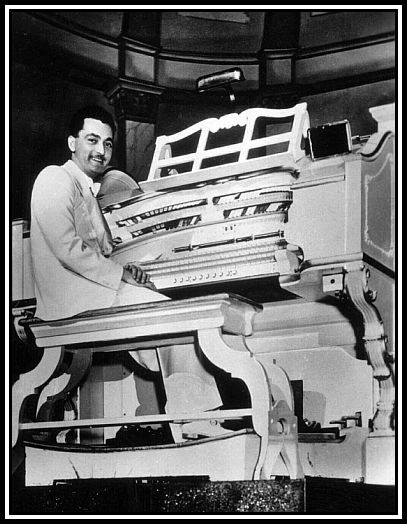 Reginald Dixon at the Console of the The Mighty Wurlitzer of The Tower Ballroom
Reginald Dixon at the Console of the The Mighty Wurlitzer of The Tower Ballroom
Although there have been a number of companies that built Theatre Organs, three were of particular interest here, since their instruments were installed in the majority of British cinemas: The Rudolph Wurlitzer Company, William Hill & Son & Norman & Beard Ltd. (which made Theatre Organs with the brand name of Christie) and The John Compton Organ Company of Acton.
In addition to these companies, there were a number of other builders in Europe and the U.S. that produced organs (both theatre and pipe). For example, in the U.S., The Robert Morton Organ Company in Van Nuys, California produced ~900 instruments during the 1920s; The M.P. Moller Pipe Organ Company, Greencastle, Pennsylvania, ~700 instruments; The W.W. Kimball & Company, Chicago, ~700 instruments; and The Bartola Musical Instrument Company, Oshkosh, Wisconsin, between 250 and 350 from 1918 to 1931.
-oOo-
THE BUILDER OF THE MIGHTY WURLITZER
The most prolific of all Theatre Organ builders was The Rudolph Wurltizer Company, which produced over 2,200 instruments between 1914 and 1942. The company was founded in 1853 in Cincinnati, Ohio by Franz Rudolph Wurlitzer (1831-1914). The company began its existence by importing musical instruments from Germany and selling them in the U.S. Later, the company manufactured pianos and in 1897 bought shares in the North Tonawanda Barrel Organ Factory, which it bought out in 1909.
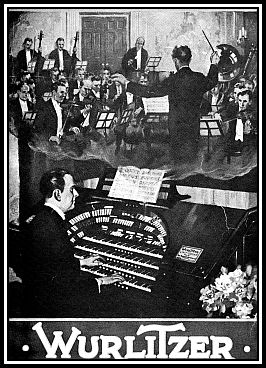
Wurlitzer moved his own manufacturing to the factory at North Tonawanda, N.Y. and expanded production to include Theatre Organs and Nickelodeons and other instruments. Theatre Organs were in great demand at the time for installation in small cinemas to accompany silent films while larger Movie Palaces were able to pay for orchestras to provide the music.
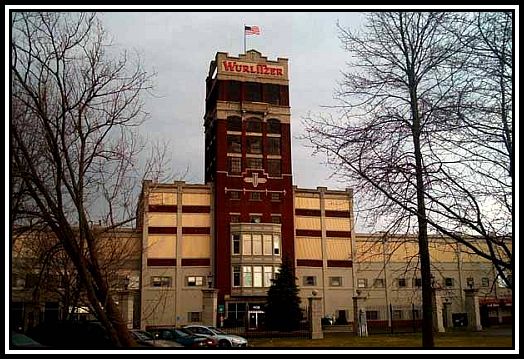 The Wurlitzer Factory, North Tonawanda, N.Y.
The Wurlitzer Factory, North Tonawanda, N.Y.
Between 1887 and 1911, Robert Hope-Jones and his Company had built 246 organs. However in 1914, he sold his company and his patents to The Wurlitzer Company. This proved to be a difficult and unfortunate association. Mr. Hope-Jones’ quickly became disillusioned with this association and committed suicide apparently from frustration with his business partners. The Wurlitzer Company went on to produce more Theatre Organs than all other builders combined and its product was to become known as The Mighty Wurlitzer and to become synonymous with the instrument itself.
 The Console of The Mighty Wurlitzer
The Console of The Mighty Wurlitzer
The Wurlitzer Company ended its manufacturing of Theatre Organs in 1942. During the Second World War years, the Company set aside its usual manufacturing activities and allowed its facilities and staff to develop and produce the Proximity Fuze for the U.S. Navy. Once war ended, the Company produced a variety of items including the Jukebox, which enjoyed a huge success. Its Model 1015, the 1015 Bubbler, sold over 56,000 between 1946 and 1948 and became a Culture Icon of the period. In 1973, the Company ceased production and the line was sold.
-oOo-
The Tonowanda factory closed down in 1973 and was sold to investors who hoped to turn it into an industrial park. The factory is still in use and is now home to a variety of small businesses.
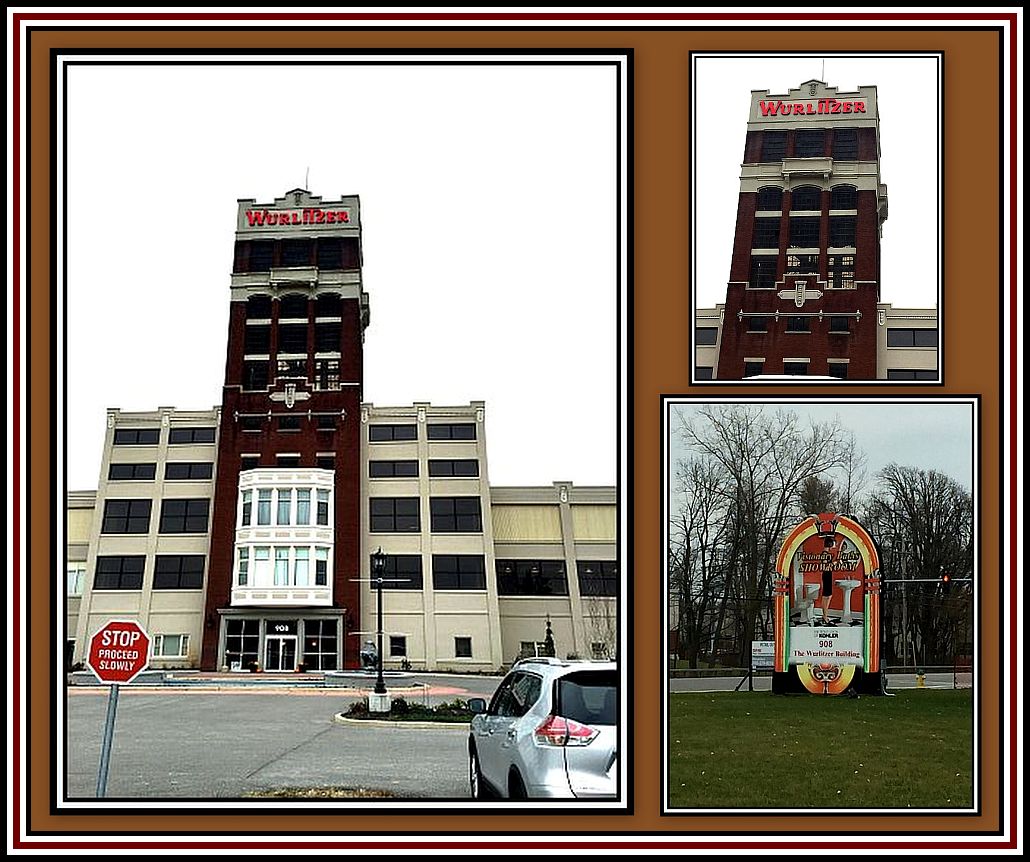 The Former Wurlitzer Factory, Tonowanda, NY in 2015
The Former Wurlitzer Factory, Tonowanda, NY in 2015
These photographs appear with permission of the photographer, Ms Iva Sillart
-oOo-
The largest of all Wurlitzer Theatre Organs produced was the instrument installed at Radio City Music Hall in 1932. This Organ has two consoles, one at either side of the stage, with four keyboards.
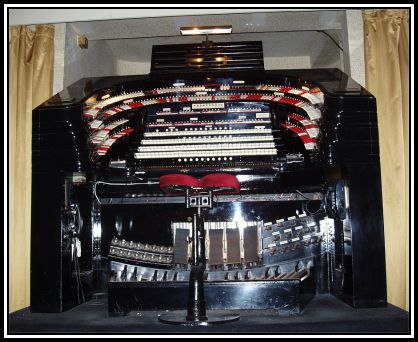 The Left Console of the Radio City Musical Hall Wurlitzer Organ
The Left Console of the Radio City Musical Hall Wurlitzer Organ
Each console may be played independently of the other with the one of the audience’s left being the primary console. The organ has 58 ranks and 4,410 pipes, which are installed in chambers on either side of the Proscenium Arch. The Organ was built as a concert instrument and not to accompany silent films and is able to play a number of musical styles including that associated with classical Pipe Organs. The Organ was restored when the Theatre underwent a major overall in 1999.
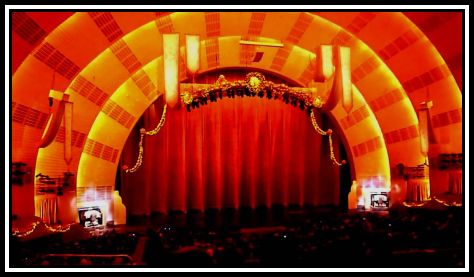 Radio City Music Hall Proscenium with the Consoles
Radio City Music Hall Proscenium with the Consoles
Apparently the contract to build an organ for Radio City Music Hall was to be given to The W.W. Kimball & Company. This was a result of Samuel L. Roxy Rothafel, who had previously operated the Roxy Theater in New York City, being more familiar with organs built by The Kimball Company.
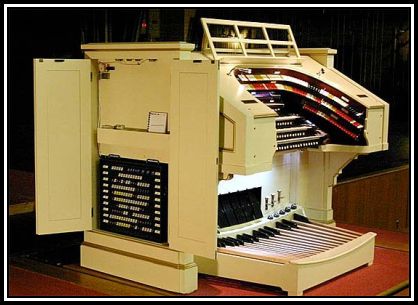 The Dickinson Kimball Master Console
The Dickinson Kimball Master Console
This photograph appears with permission of The Dickinson Theatre Organ Society
Click here to hear the Organ being played
The Kimball Company had a reputation for building large Pipe Organs and had built the organ installed in the Mormon Tabernacle in 1901.
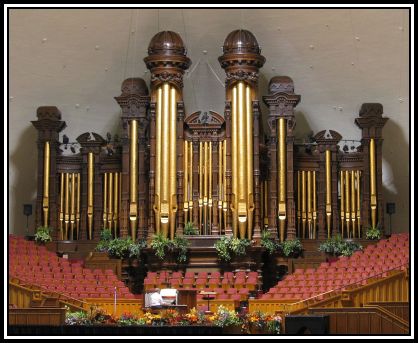 The Organ of the Salt Lake City Mormon Tabernacle
The Organ of the Salt Lake City Mormon Tabernacle
However, it is believed that the Board of Trustees of Rockefeller Center felt that the most prestigious theatre in the U.S. should have an organ built by the leading Theatre Organ Company. As a result, the contract was awarded to The Wurlitzer Company. Despite this, the organ specifications previously provided by The Kimball Company were retained and used.
Although The Kimball Company manufactured ~700 Theatre Organs, most were not pure in nature, since each retained a concert nature, which would account for the Radio City Music Hall Organ being a concert instrument.
-oOo-
In October 1927, The Jazz Singer, the first feature length Talking Picture or Talkie, was released in the U.S. Following its success, the production of silent films declined rapidly. As a result, Theatre Organs were no longer required to provide musical accompaniment while the film was being screened.
Although many theatres retained their Theatre Organs to provide musical entertainment between the feature films, many others did not and had them removed. The now-discarded Theatre Organs were either sold for scrap or to churches, private homes, museums, ice rinks, roller shaking rinks and restaurants while a number were sold to cinema owners in the U.K.
The decline in the number of Theatre Organs resulted in some organists being sacked. Some organists turned to radio to find work, since most radio stations in the U.S. had one or more Theatre Organs in their studios. Some radio stations had bought redundant organs from theatres while some had bought them new.
The organ played an important part in early radio, as their accompaniment was used to contribute to the mood and heighten the tension of certain types of programming, such as Soap Operas, mysteries and game shows etc and for short recitals and musical request shows.
 A Theatre Organ Console in a studio of WMAQ-Chicago in the 1930s
A Theatre Organ Console in a studio of WMAQ-Chicago in the 1930s
——oooOOOooo——
Click here to GO to PAGE TWO: BUILDERS of THEATRE ORGANS – BUILDING THE WURLITZER ORGAN IN THE U.K.
——oooOOOooo——
Click here to return to PART ONE: INTRODUCTION
——oooOOOooo——
Click here to return to the GLOSSARY
——oooOOOooo——
Click here to return to the THE THEATRE ORGAN HOMEPAGE
——oooOOOooo——
Click here to return to the TABLE OF CONTENTS
——oooOOOooo——

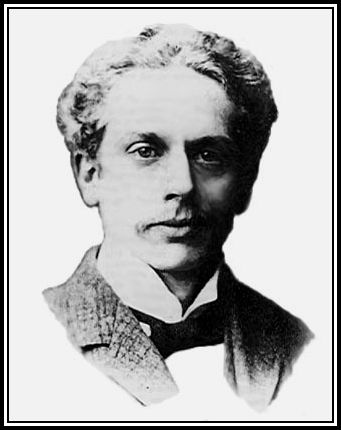
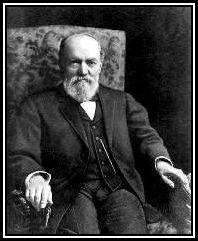
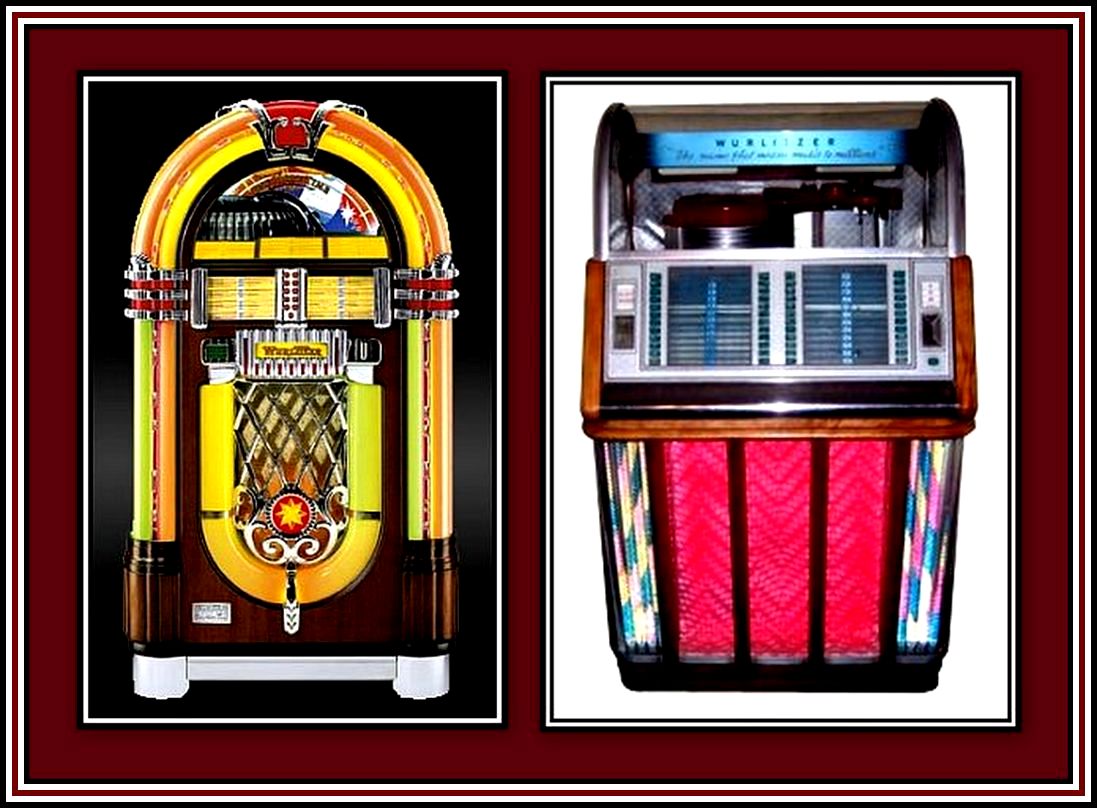
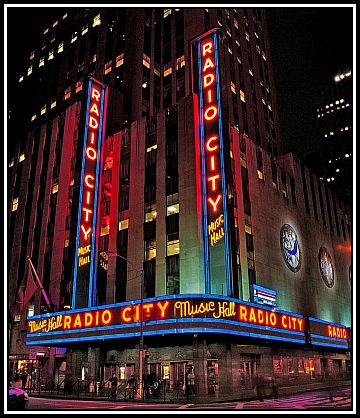
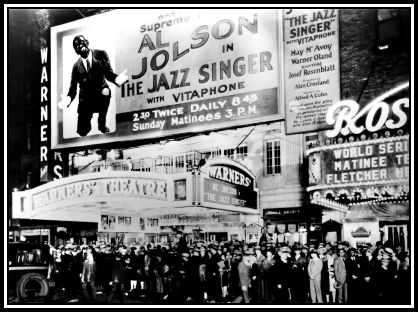
Hello again,
I continue to enjoy your pages and hope you won’t mind me pointing out two mistakes in Part 1. You have – in one shot – Reginald Foort spelt as Foorte. The latter was a famous London restaurent owner! Also the photo of the Tower WurliTzer indicates that the organ behind it is a Yamaha. This is not so. It was a Wersi…and the name can just be made out on the RH side.
Re the State Kilburn. I have a photo which I took there in my RAF days and which I have never seen any other shot of. At one time it was complete with a stage grand piano. I have that photo if you would like a copy.
Also, and I don’t know where it was obtained from or who gave it to you, but the Monochrome shot of Ernest Broadbent ( which was taken at the Free Trade Hall WurliTzer ) is one which comes from my collection!
Thank you for sending your corrections and the offer of a photograph of the Theatre Organ of the State Kilburn. I look forward to receiving it.
I too have noticed that you have some unique photos on your site that have been taken from my Flickr page.
But i unlike Mr Ashton have NO problem with this.
I dont really know why anyone would want to be credited.
The organ interest is rapidly diminishing in our modern world so i feel that any way it is advertised on different webpages would help keep the theatre alive -even if it is just for a minority..
I am happy to share any photos i have on my page-but most of them are not mine and were not credited in the publications or webpages they were copied from.
Best wishes and thanks for a good site.
Thank you for your kind comment.
Your comment appears to ignore copyright rules. Fine if you are happy to have your pictures not credited. That is your prerogative. There are others like myself who are professional photographers(in my case retired) who have gone to college and obtained professional qualifications,- British Institute of Professional Photographers and Kinemetograph Sound and Television Socy. – who are proud of the work we do and of course like you, do not charge for our work as our only desire is to help spread the word of theatre organs.
That does not mean the theft of copyright can be ignored completely by who or ever wishes. In my case I simple ask for the credit as photo:P.G.Young. Is that too much to ask? Why does it hurt so much for you to apply it? Sounds to me like some form of sourer grapes to put it very politely.
Just as an added thought. My pictures are in the main of the Compton 3/c at the now rebranded Plaza. Weston-super-Mare. My picture of the console has had thousands of hits on very many web pages. That must be good for the cause.
Message to all of you out there, amateur or professional or perhaps just a man with a mobile. Firstly make sure photography and sound recording is allowed when at a concert. Don’t assume that because you have paid to go in you can do anything you like. Then like me and many others spread the pictures far and wide. With a credit or not. If the pictures are yours, its your choise. If not please CREDIT the copyright owner.